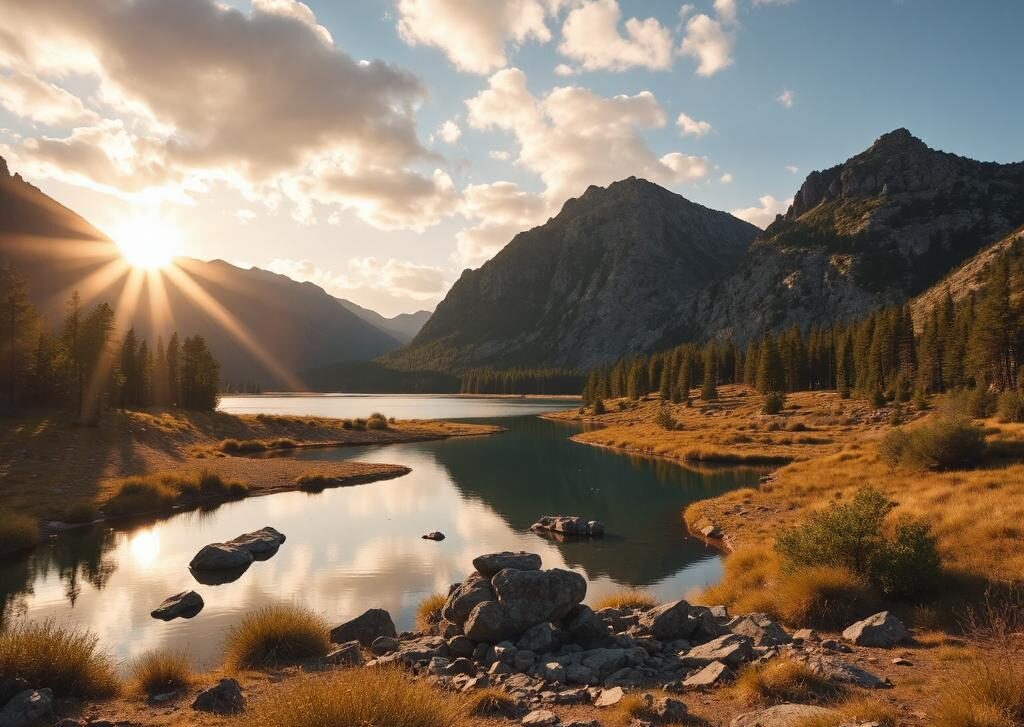Explore the Best National Parks to Camp in Summer, where scenic beauty meets adventure. From majestic mountains to serene lakes, these parks offer perfect spots for hiking, stargazing, and reconnecting with nature. Whether you’re a seasoned camper or a first-timer, these destinations promise unforgettable summer camping experiences for everyone.
1. Yosemite National Park
Yosemite the waterfalls towering Granite monoliths deep valleys and ancient giant sequoias that dot Yosemite National Park are what make it so famous Yosemite became a national park on October 1st 1890 and more than 125 years later it still amazes visitors El Capitan and Half Dome are illuminated in brilliant Reds and oranges by the sun’s amazing tricks of Yosemite when it reflects the orange light of a sunset in the middle to late of February horsetail fall is famous for giving the impression that it is on fire it’s a stunning sight that reminds me of yosemite’s historic Firefall which took place every night until 1968. Hotel owners would throw campfire Embers over Glacier Point to impress visitors to the park.
2. Yellowstone National Park
Yellowstone Yellowstone National Park is a national park in Wyoming’s northwest corner and extends into Montana and Idaho it was established by the Yellowstone National Park protection act of the 42nd Congress of the United States Yellowstone which is widely considered to be the first national park worldwide was the first national park in the United States the Old Faithful Geyser one of the Park’s most well-known attractions is one of the Park’s many geothermal features the subal Pine Forest is the most common of the many biomes it represents it is part of the ego region of forests in the South Central Rockies.
3. Glacier National Park

Glacier National Park Glacier National Park is an American National Park in the northwest of Montana it is on the border between Canada and the United States near the provinces of Alberta and British Columbia in Canada more than 130 named lakes more than one thousand distinct plant and animal species and portions of two mountain ranges sub-ranges of the Marquee mountains can be found within the parks more than one million Acres the crown of the continent ecosystem a protected area that spans 16 000 square miles is centered on this vast pristine ecosystem.
4. Grand Canyon National Park
Grand Canyon one of the world’s finest examples of arid land erosion is the Grand Canyon the canyon which is bounded by the Colorado River and spans 277 miles is enormous and has an average depth of 4 000 feet at its deepest point it is six thousand feet deep and 18 miles wide at however the grand Canyon’s significance extends Beyond its geology there are several significant ecosystems in the park the presence of five of the seven life zones and three of the four types of deserts in North America is to blame for the Region’s remarkable biological diversity.
5. Zion National Park
Zion National Park Zion National Park is a convenient stop for those traveling to Salt Lake City Las Vegas or Grand Canyon National Park it is the southwest corner of Utah close to where Nevada and Arizona meet Zion which can be reached via State Route 9 or Interstate 15 offers visitors a wide range of activities in a number of different locations in 1909 it was designated mccunto weep National Monument but in 1919 the United States Congress made it a national park.
Zion National Park’s crowning Glory Zion Canyon has a depth of 2 000 feet on average and offers hiking opportunities along its floor in the Narrows which is 20 to 30 feet wide and the subway which is more difficult this section of the Virgin River is also suitable for swimming natural rock arches are one of Zion’s other spectacular features Crawford Arch can be seen from the patio of the Park’s human history museum which is one thousand feet above the canyon floor.
6. Grand Teton National Park

Grand Teton National Park the ecosystems in Grand Teton National Park is almost impenetrable and the same kinds of plants and animals that have been around since prehistoric times can still be found there the park is home to more than 1 000 vascular plant species dozens of mammal species 300 bird species more than a dozen fish species and a few reptile and amphibian species efforts have been made to better protect some of the Native fish species and the white pine bark which is becoming increasingly endangered as a result of a variety of changes in the ecosystem some of which has been caused by humans one of the largest intact mid-latitude temperate ecosystems in the world is the greater Yellowstone ecosystem.
7. Bryce Canyon National Park
Bryce Canyon National Park American National Park Bryce Canyon is in Southwestern Utah Bryce Canyon is the Park’s most prominent feature despite its name it is actually a group of enormous natural amphitheaters on the Eastern side of the pond sugit Plateau the geological structures known as hoodoos that distinguish Bryce are the result of steam erosion and frost weathering of the river and Lake beds sedimentary rocks visitors to the park can take in breathtaking views of the park thanks to the Rock’s white red and orange hues.
8. Rocky Mountain National Park
Rocky Mountain National Park Rocky Mountain National Park is an American National Park in the Front Range of the Rocky Mountains about 55 miles or 89 kilometers Northwest of Denver and North Central Colorado between the towns of Grand Lake to the West and East Park to the east is where the park is located the Colorado River’s Headwaters are in the Park’s Northwestern part and the eastern and western slopes of the Continental Divide pass directly through the park Center the Park’s main features are mountains Alpine lakes and a wide range of wildlife in a variety of climates and environments from Mountain Tundra to wooded forest.
9. Arches National Park
Arches National Park the United States Arches National Park is located in Eastern Utah four miles or six kilometers north of Moab Utah is the park which is next to the Colorado River the park is home to more than 2 000 natural Sandstone arches including the well-known Delicate Arch as well as a wide range of distinctive geological resources and formations the park has the world’s highest density of natural arches in 2018 the park hosted more than 1.6 million visitors.
10. Great Smoky Mountains National Park
Great Smoky Mountains National Park Great Smoky Mountains National Park America’s most popular National Park is a wonderful getaway Camp hike and experience one of the oldest mountain ranges in America Great Smoky Mountains National Park which was established in 1926 and is located on the border between North Carolina and Tennessee is made up of ridges upon Ridges of forests that appear to go on forever this mountain range is known around the world for the variety of its plant and animal life the beauty of its ancient Mountains and the history of Southern Appalachian Mountain culture which is why it is referred to as the Smokies Great Smoky Mountains National Park has nearly 80 historic buildings spectacular Wildflower displays and a lot of wildlife there.
Conclusion:
In conclusion, choosing the best national parks to camp in summer ensures an unforgettable outdoor experience. With stunning views, wildlife, and starry nights, these parks offer the perfect escape for nature lovers and camping enthusiasts during the summer season.

